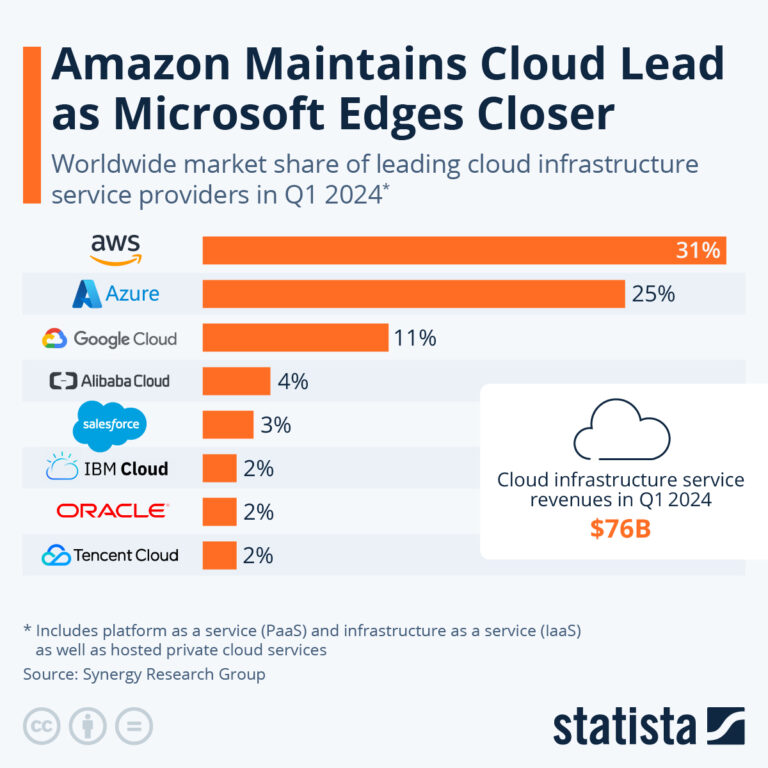
You’ve decided to build a website. You know what you want it to be about, and you might even have a name in mind. Now, you need to figure out how to host a website.
That’s where I come in. I’ve been building websites for over 15 years, and I’ve learned a lot about creating and hosting them. I’ll share the most important steps to hosting a website so you can get started.
What does it mean to host a website?
Hosting a website makes your site available online by putting all of your website files on a web server.
A web server is a specialized computer with software for storing website files such as blog posts and sending them to users’ browsers so your visitors can view them. These servers run 24/7, so users can access your website at any time.
Web servers are usually complicated to set up and expensive to maintain. Thankfully, you don’t need to understand exactly how they work to learn how to host a website — plenty of companies are happy to manage web servers for you.
What you need to host a website
You need two things to host a website: a domain name and web hosting.
Domain name
A domain name — often shortened to just “domain” — is the name people use to find your website. For example, our domain is CNET.com.
Most companies, including CNET, use their business names as domain names. This ensures consistency in branding and helps customers easily find your website.
There are two ways to secure a domain name:
- Through a domain registrar: These companies, like Namecheap, specialize in registering and managing domains. You can buy just a domain from these companies.
- Through a web host: Most web hosting companies offer domain registration. Many even provide free domains bundled into their web hosting plans — at least for the first year — so you won’t need to pay a separate fee to get one.
If you don’t have a domain name in mind, or you discover the one you want to use is taken, you can use a domain name generator tool to find the perfect domain. Then you can move on to the second thing you’ll need to host a website, which is website hosting.
Web hosting

Web server room
Web hosting services provide server space to store your website. You can create your own web server, but in most cases you’ll want to rent out server space from a web hosting company, as server setup and maintenance is a complicated and expensive process.
Web hosting companies create, configure and maintain web servers, which they then rent to website owners.
The best web hosting companies provide various tools to help you build and run your website. Some even offer other tools for creating an online business, like email hosting and professional design services.
How to host a website in 6 steps
Once you know what your site will be about and what domain name you want, here’s what you need to do to host a website.
1. Decide if you want to use a content management system or a website builder
There are two types of tools that you can use to build and manage your site, a CMS or a website builder.
CMS

WordPress admin dashboard
A CMS is software that provides the tools you need to design, organize, publish and manage website content like blog posts. Some of these are proprietary, like the CMS used by Shopify. Others are open-source, meaning you can install them on any hosting company’s servers.
Content management systems are highly flexible but can be difficult to use if you’re not technically inclined. The most commonly used CMS is WordPress. Other options include Magento, Joomla and Drupal.
Most content management systems don’t require the use of code like HTML or JavaScript, but they do allow you to customize your site with code if you want to.
Website builder

A website using a Squarespace template inside the Squarespace site creation area
A website builder is a visual design tool that allows you to build a website without installing templates, extensions or other tools. Many also offer AI tools that generate a site design for you based on information you share about your website/business.
These tools are often proprietary, so you’ll usually need to buy hosting from the company that offers the website builder you want to use. Most website builders also have limited customization options when compared with a CMS like WordPress.
Website builders don’t require you to use code to build your website. In fact, most don’t allow this option at all — or they restrict it to higher-tier plans.
How to choose between a CMS and a website builder
So, how do you choose the best option for your site?
- Choose a CMS if you want the most extensive customization options available and don’t mind a software learning curve. A CMS is also a good choice if you want to have a wide range of hosting (and pricing) options.
- Choose a website builder if you want the simplest, most streamlined website-building experience possible, and you’re happy sticking with a host compatible with that website builder (typically the company that created it).
2. Choose a web hosting type
If you want to use a website builder, you’ll probably choose website builder hosting. These plans come with the website builder pre-installed and use shared hosting — when purchased through a company like Hostinger — or cloud hosting — when purchased through a company like Squarespace.
If you want to use a CMS, you can choose any of the most popular types of web hosting:
Shared hosting
Shared hosting stores your website on a shared server. This means your site can slow down if another site on the server experiences a traffic spike and starts hogging the shared resources.
High-traffic sites — sites that regularly have several hundred thousand visitors in a month — won’t do well on shared hosting, but its affordability makes it a great option for small businesses.
WordPress hosting
WordPress hosting is web hosting that comes with WordPress pre-installed. This type of hosting may also include tools like specialized WordPress caching for improved loading speeds. Most of these plans include automated WordPress updates and maintenance.
Some WordPress hosting plans use cloud or VPS hosting, but the majority of these plans are shared hosting plans.
Cloud hosting
Cloud hosting stores your website on several servers, allowing it to handle large amounts of traffic. These servers are located in multiple data centers, ensuring faster loading speeds for visitors from different locations and reducing the possibility of your site going down.
Cloud hosting is often more expensive than shared hosting.
VPS hosting
VPS hosting,short for virtual private server hosting, divides one physical server into virtual servers with dedicated resources.
VPS hosting can handle more significant traffic than shared hosting but is typically more expensive and complicated to manage than shared or cloud hosting. You can choose host-managed options to avoid configuring things yourself, but this will further increase costs.
Dedicated hosting

A rack of web servers
Dedicated hosting gives you an entire physical server. This maximizes the amount of resources you have access to and provides extensive customization options. However, dedicated web hosting is usually both expensive and complicated to maintain.
Like VPS hosting, dedicated hosting can come with a host-managed option where the hosting company handles server configuration and management for you, but this is often very expensive.
How to choose a type of web hosting
In most cases, I recommend choosing shared hosting for your first website. This keeps your expenses relatively low and requires little to no setup on your end. You can also choose cloud hosting for minimal setup, but cloud hosting tends to be more expensive.
If you’re building a website for a real-world business and expect hundreds of thousands of visitors, consider more advanced hosting types such as VPS or dedicated hosting. However, it’s important to consider the cost, as you’ll either need to choose an expensive managed option or hire a system administrator to manage your server.
3. Choose a web hosting company
A web host is the company you’ll rent server space from.
For a website builder, I recommend Squarespace, Wix or — if you’re an e-commerce brand with a significant budget — Shopify. Many traditional web hosting companies now offer more affordable website builders, but they aren’t as flexible or as well-supported.
If you’re using a CMS, there are many great options. Two companies I specifically recommend are Ionos and SiteGround. These companies provide a variety of hosting plans with top-notch security features, guaranteed uptime of 99.99% and high-quality customer service.
Here are some of the factors to consider in your web hosting search:
- Uptime: If your website is down when someone attempts to visit, they’ll go somewhere else. Downtime reduces your audience, reduces the trust your existing audience has in your site and may lose you money. You’ll want to choose a web host with a 99.99% uptime guarantee to avoid this.
- Speed: Good web hosts use tools like caching and content delivery networks or CDNs. Caching stores key information in your visitors’ browsers and CDNs store information in data centers around the globe, ensuring fast loading times for visitors all over the world.
- Security: A good web hosting service includes several features to keep your data (and your users’ data) safe. Look for a web host with SSL certification, firewall protection and regular server updates.
- Ease of use: Look for a company that uses an interface like cPanel — the industry standard for website file management — to simplify site maintenance. You may also want to consider a company with WordPress hosting and/or managed hosting plans that handle software updates for you.
- Scalability: Your web host should be able to accommodate your website as it grows by offering a variety of shared hosting, VPS hosting and dedicated hosting plans that you can upgrade to.
- Customer service: Choose a company with multiple ways to contact 24/7 customer support via phone, live chat and/or email. Look at reviews to ensure that the company you’re considering responds to customer support inquiries in a timely and helpful manner.
You can see a full list of factors to consider when choosing a web host in our guide about what web hosting is.
4. Purchase a web hosting package
Next, you’ll need to choose the best web hosting plan for your site’s needs. There are a few factors to consider here:
- Storage space: If you’re building a freelance portfolio, you’ll probably do fine with minimal storage space. If you want to create a blog, a membership site or another type of website with large amounts of content, choose a plan with at least 10GB of storage space.
- Bandwidth: Bandwidth dictates how fast your website loads for visitors and how many visitors can visit your site. Many plans offer unmetered or unlimited plans to accommodate significant traffic spikes.
- Domain: Some plans include a free domain, either for one year or permanently, bundled into the hosting plan.
- CMS support: Most high-quality web hosting plans offer one-click installation for WordPress and other popular CMS options. Some come with WordPress (or another CMS) pre-installed, so you can start building a website right away.
- Management: On a shared or cloud hosting plan, web hosting companies manage your server for you. Some plans take this further by managing your CMS for you (these plans are often only available for WordPress), ensuring that it stays up-to-date and secure.
- Backups: Many web hosting plans include daily or weekly backups, automatically saving all of your data to a secondary server. If there’s an issue with your site, you can use these backups to restore it quickly.
- Ability to host multiple websites: If you plan to create separate websites for different countries where you do business or different types of content you want to publish, you might want to seek a plan where you can host all of them.
- Extras: Some web hosting plans come with extras like email hosting, which allows you to have one or more custom email addresses at your domain.
A note about “unlimited”: Some plans claim to offer unlimited storage or bandwidth. These plans almost always do have an upper limit — the limit is just so high that most sites will never reach them. If you want to know this upper limit, you’ll have to search for it in the Terms of Service, or TOS.
At this point, you’re probably wondering: Where is pricing? Pricing is important — in fact, it’s so important, and so convoluted in the web hosting space, that it deserves its own section.
Here’s what you need to know about web hosting costs:
- Be prepared to pay annually. Web hosts often list their prices as “$x a month,” but many don’t actually offer month-to-month plans. So, you’ll need to multiply the monthly cost by 12 (more if you want to sign up for multiple years) to understand your initial cost.
- Your initial cost won’t be your long-term cost. You’ll often see a low price listed with an asterisk mentioning a standard rate. The low price will only be valid for your first term. When your contract renews, you’ll be moved up to the standard rate, so you’ll need to factor this rate into your long-term budgeting.
- The web host may automatically include add-ons. Sometimes a web host will automatically add services to your package during the checkout process, complete with extra fees. Always triple-check your cart for these sneaky add-ons.
Can’t I just choose a company that doesn’t do these things? Unfortunately, the first two items listed above are standard practice in the industry. You’ll have a hard time finding a company that doesn’t do these things.
You can find a company that doesn’t automatically bundle add-ons into your web hosting package, though — in fact, most of the companies on our list of the best web hosting companies of 2024 fall into this category.
Most of all, be sure to choose a plan that will accommodate your site now and through the growth you expect in the next year (or however long you’re purchasing hosting for). Most reputable web hosts make switching to a higher-tier plan easy, but this unexpected cost can derail your annual budget.
5. Register a domain
If your hosting package includes a domain, you’ll have registered your domain during the checkout process.
If you didn’t get a domain when you purchased your web hosting package, you can buy one from a domain registrar. To get the most out of this option, choose a domain registrar that:
- Offers good long-term pricing: Like web hosting, domain prices are often lower during the first contract term. The price increase here is often only a few dollars, but this can add up over several years.
- Includes domain privacy: When registering a domain, you’re required to enter contact information, including a physical address. Your contact information is automatically published in the WHOIS Database. If you don’t want these details to be public, you can use domain privacy to replace them with points of contact maintained by your registrar.
- Is trustworthy: Look for a domain registrar with good reviews on sites like Trustpilot. Specifically, look for references to how easy the company makes it to manage domains and how well their customer service team operates.
Personally, I’ve used Namecheap for years. The domain registration and management processes are easy, there’s great customer service and the long-term pricing is excellent.
Once you’ve selected a registrar, you can search for the domain you want, select it (and any other variations you want to buy) and make your purchase. You’ll also need to create an account for managing your domain.
6. Connect a domain to your web hosting plan
If you’ve purchased your domain from a registrar, you’ll need to point it to your host’s nameservers. The exact process will vary depending on the registrar and web host you’re using, but it can typically be done in five steps:
- Find your web host’s nameservers. You can often locate these in the welcome email you get when you purchase web hosting. Check your account dashboard if you don’t find them in your email.
- Open the management area for your domain. Typically, this is accessed by logging into your account and clicking on the domain you want to manage.
- Find the Nameservers area of your domain management. This will typically be set to “(Your Registrar DNS).” Switch it to Custom DNS. Here’s an example of what this area looks like on Namecheap:

Namecheap DNS settings “Custom DNS” area
- Copy and paste the nameservers listed for your web host into the appropriate spaces in your domain management area.
- Save your new domain settings.
Your domain then transfers to the newly designated nameservers. This often happens within a few hours, but can take up to 72 hours.
The bottom line: What you need to host a website
Web hosting companies make it easy to host a website without any technical experience. What you do need is a firm understanding of web hosting terms, web hosting plans and domain registration.
The easiest way to host your own websites is to purchase a plan from a web hosting company. Most web hosting plans give you space on pre-configured servers, though more advanced plans give you a virtual or physical server that you’ll have to configure yourself.
You can also build your own server to host your website on. However, I don’t recommend this option to most people as it requires significant financial investment and technical skill.
There are free web hosting options available, but they tend to come with strict limitations on storage, bandwidth and customization. Most also show ads on your website. These ads pay the hosting company, not you, and you have no control over their content.
If you want to create a professional-looking website and have enough resources to handle a growing audience, you’ll need to select a paid plan.
The simplest way to host a website is to purchase web hosting from a website builder company like Squarespace. These companies have straightforward hosting plans that come with built-in website builders so you don’t have to choose a type of web hosting or set up a CMS.
The cost of hosting a website depends on the type of hosting you choose, the specific company you work with and the plan you purchase.
Many web hosting companies offer plans with starting prices of $2 to $4 per month, with renewal prices going up to $10 to $12 per month.



